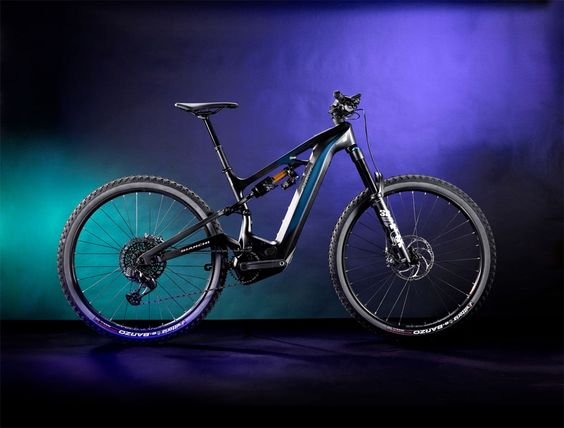
As automotive technology rapidly evolves, so does the emphasis on safety features that can protect drivers, passengers, and pedestrians alike. With advancements in artificial intelligence (AI), machine learning, sensor technology, and communication networks, the future of car safety is set to be more innovative and effective than ever. Here are the top 10 car safety features that are expected to become mainstream in the coming years, offering a glimpse into the future of automotive safety.
1. Autonomous Emergency Braking (AEB) with Advanced Detection
Autonomous Emergency Braking (AEB) systems have already become common in many new vehicles, but the future versions of AEB will be more advanced. Future AEB systems will incorporate AI-powered sensors, cameras, and radar technology to detect not only vehicles but also pedestrians, cyclists, and even animals in all weather conditions and low-light environments.
Key Features:
- Real-Time Hazard Analysis: The next generation of AEB will use deep learning algorithms to predict potential collisions based on vehicle speed, distance, and direction.
- Improved Object Detection: Advanced sensors and cameras will be able to identify smaller or partially obscured objects, providing better protection against unexpected hazards.
- Adaptive Braking: Future AEB systems will be able to modulate braking force based on the severity of the potential collision, minimizing damage and injury.
2. Vehicle-to-Everything (V2X) Communication
Vehicle-to-Everything (V2X) communication technology enables vehicles to communicate with other vehicles (V2V), infrastructure (V2I), pedestrians (V2P), and networks (V2N). This technology will be instrumental in preventing accidents by providing real-time information about road conditions, traffic signals, and potential hazards.
Key Features:
- Traffic Signal Communication: Vehicles will receive information from traffic lights, allowing for safer navigation through intersections by reducing red-light violations.
- Collision Avoidance Alerts: V2X technology will alert drivers to potential collisions with other vehicles, pedestrians, or cyclists, even if they are not in the driver’s line of sight.
- Dynamic Speed Management: V2X will enable dynamic speed adjustments based on real-time traffic and road conditions, reducing the risk of accidents.
3. Augmented Reality Heads-Up Display (AR HUD)
Augmented Reality Heads-Up Displays (AR HUDs) will revolutionize how drivers receive and interpret information. Instead of traditional dashboard displays, AR HUDs will project critical information directly onto the windshield, enhancing situational awareness without requiring drivers to take their eyes off the road.
Key Features:
- Real-Time Navigation: AR HUDs will display real-time navigation cues, including lane guidance, distance markers, and turn-by-turn instructions, directly on the windshield.
- Hazard Alerts: Visual alerts for potential hazards, such as pedestrians, cyclists, or obstacles, will be overlaid onto the driver’s field of vision, allowing for quicker reactions.
- Driver Monitoring: AR HUDs will integrate with driver monitoring systems to detect fatigue or distraction, providing visual and auditory alerts to refocus the driver’s attention.
4. Advanced Driver Monitoring Systems (DMS)
Advanced Driver Monitoring Systems (DMS) will use AI and facial recognition technology to monitor the driver’s state in real-time, detecting signs of fatigue, distraction, or impairment. These systems will play a crucial role in reducing accidents caused by human error, which remains the leading cause of road accidents.
Key Features:
- Real-Time Alerts: The DMS will provide immediate alerts if it detects signs of drowsiness, inattentiveness, or intoxication, prompting the driver to take corrective action.
- Automatic Intervention: In extreme cases, such as the driver becoming unconscious, the system can automatically slow down or stop the vehicle safely.
- Health Monitoring: Some future DMS may even include biometric sensors that monitor vital signs, such as heart rate and blood pressure, and alert the driver or emergency services in the event of a health emergency.
5. Adaptive Cruise Control with Lane Centering
Adaptive Cruise Control (ACC) is evolving beyond just maintaining a safe following distance. The future of ACC will include advanced lane-centering technology that keeps the vehicle centered in its lane, even on winding roads or during inclement weather, significantly reducing the risk of accidents caused by lane drift.
Key Features:
- Enhanced Lane Detection: Using a combination of cameras, radar, and LiDAR, future ACC systems will detect lane markings, road edges, and obstacles with greater accuracy.
- Dynamic Speed Adjustment: The system will adjust speed not only based on the distance to the vehicle ahead but also based on road curves, traffic flow, and speed limits.
- Automatic Overtaking: Some ACC systems will be capable of automatically overtaking slower vehicles when conditions are safe, improving traffic flow and reducing the risk of rear-end collisions.
6. Active Steering Assistance
Active Steering Assistance will help drivers maintain control in emergency situations by automatically adjusting the steering to avoid collisions. This technology will work in tandem with other safety systems, such as AEB and ACC, to provide a comprehensive safety net.
Key Features:
- Automatic Evasive Maneuvers: The system can take over the steering to avoid obstacles or vehicles in the event of an imminent collision.
- Integrated with Traffic Sign Recognition: Active steering will work with traffic sign recognition systems to ensure compliance with road rules, such as staying within lane boundaries.
- Collision Avoidance: The system will be capable of calculating the best evasive action to minimize the impact in case of an unavoidable collision.
7. 360-Degree Surveillance Cameras and Sensors
Future cars will be equipped with 360-degree surveillance systems that provide a complete view of the vehicle’s surroundings. These systems will use a network of cameras, ultrasonic sensors, and radar to detect and alert drivers to potential hazards.
Key Features:
- Full-Surround Vision: Cameras positioned around the vehicle will provide a complete bird’s-eye view, eliminating blind spots and helping with parking, lane changes, and reversing.
- Proximity Sensors: Ultrasonic sensors will detect objects close to the vehicle, providing audio and visual alerts to prevent collisions during low-speed maneuvers.
- Obstacle Detection and Classification: Advanced radar and LiDAR systems will detect and classify different types of obstacles, from vehicles to small children, and provide context-specific alerts.
8. Enhanced Night Vision and Infrared Detection
Night driving can be particularly dangerous due to reduced visibility. Enhanced night vision and infrared detection systems will use thermal imaging and infrared sensors to detect objects, animals, or pedestrians in low-light conditions, well beyond the range of traditional headlights.
Key Features:
- Thermal Imaging: Infrared cameras will detect heat signatures from people and animals, providing alerts and visual cues on the dashboard or HUD.
- Automatic High-Beam Control: The system will automatically switch between high and low beams to improve visibility without blinding oncoming drivers.
- Dynamic Light Spotting: Future systems will use high-resolution LED headlights to highlight potential hazards, such as a pedestrian crossing the road, directing the driver’s attention to the danger.
9. Predictive Maintenance Alerts
Future vehicles will be equipped with AI-driven predictive maintenance systems that monitor the health of critical components in real-time. This technology will predict failures before they occur, allowing for timely repairs and reducing the risk of accidents due to mechanical issues.
Key Features:
- Real-Time Diagnostics: The system continuously monitors the engine, brakes, tires, and other critical systems, alerting the driver to potential issues.
- Data-Driven Insights: Using big data and machine learning, predictive maintenance systems will learn from past vehicle data to forecast when parts are likely to fail.
- Remote Updates and Assistance: Connected vehicles will receive over-the-air updates and remote diagnostics, minimizing downtime and keeping the vehicle safe to drive.
10. Artificial Intelligence Co-Driver
The AI Co-Driver is an emerging concept where an AI-powered virtual assistant provides real-time guidance, navigation, and safety alerts to the driver. This system will go beyond basic voice commands, offering proactive safety assistance and decision-making support.
Key Features:
- Proactive Alerts and Suggestions: The AI Co-Driver will monitor driving conditions, traffic patterns, and the driver’s behavior, providing timely suggestions, such as recommending a safer route or alerting the driver to potential hazards.
- Personalized Driving Experience: The AI will learn the driver’s preferences and habits, adjusting settings like seat position, climate control, and infotainment to suit the driver’s comfort.
- Emergency Management: In emergencies, the AI Co-Driver can take control, slowing down the vehicle or guiding it to a safe location while alerting emergency services.
Conclusion
The future of car safety is set to be driven by cutting-edge technologies that prioritize the well-being of drivers, passengers, and pedestrians. From AI-driven co-drivers and advanced driver monitoring systems to V2X communication and augmented reality displays, these safety features will transform how we interact with our vehicles, making roads safer and driving experiences more enjoyable. As these innovations become more mainstream, we can expect a significant reduction in road accidents, bringing us closer to a world where vehicle-related fatalities are a thing of the past.






